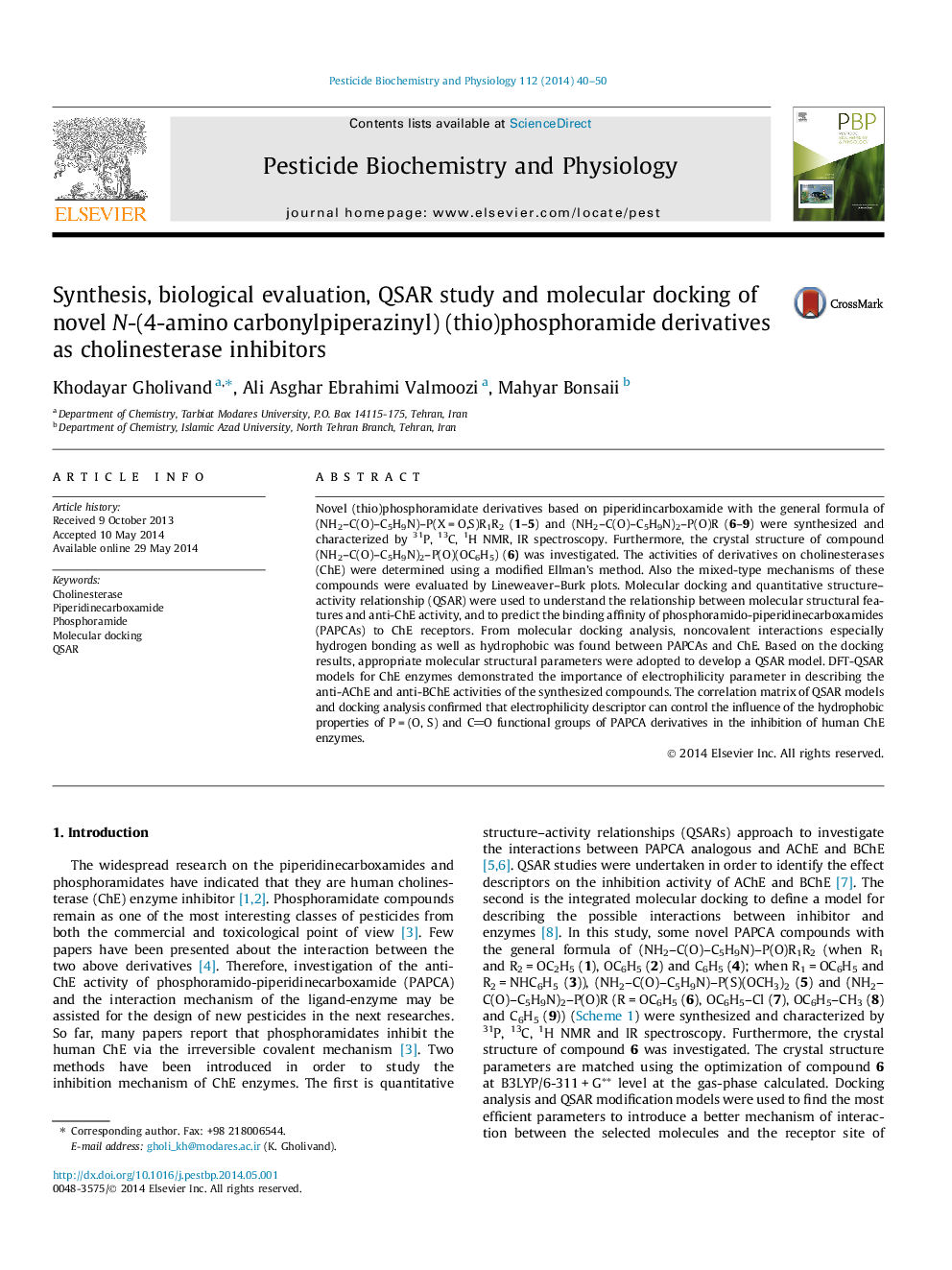| Article ID | Journal | Published Year | Pages | File Type |
|---|---|---|---|---|
| 2009209 | Pesticide Biochemistry and Physiology | 2014 | 11 Pages |
•Nonvovalent interaction (H-bonds and hydrophobic) created between PAPCA derivatives with the ChEs.•DFT-QSAR models show that the electrophilicity contributes an important function in the inhibition of enzyme.•The mixed-type mechanisms of these compounds were evaluated by Lineweaver–Burk plots.
Novel (thio)phosphoramidate derivatives based on piperidincarboxamide with the general formula of (NH2–C(O)–C5H9N)–P(X = O,S)R1R2 (1–5) and (NH2–C(O)–C5H9N)2–P(O)R (6–9) were synthesized and characterized by 31P, 13C, 1H NMR, IR spectroscopy. Furthermore, the crystal structure of compound (NH2–C(O)–C5H9N)2–P(O)(OC6H5) (6) was investigated. The activities of derivatives on cholinesterases (ChE) were determined using a modified Ellman’s method. Also the mixed-type mechanisms of these compounds were evaluated by Lineweaver–Burk plots. Molecular docking and quantitative structure–activity relationship (QSAR) were used to understand the relationship between molecular structural features and anti-ChE activity, and to predict the binding affinity of phosphoramido-piperidinecarboxamides (PAPCAs) to ChE receptors. From molecular docking analysis, noncovalent interactions especially hydrogen bonding as well as hydrophobic was found between PAPCAs and ChE. Based on the docking results, appropriate molecular structural parameters were adopted to develop a QSAR model. DFT-QSAR models for ChE enzymes demonstrated the importance of electrophilicity parameter in describing the anti-AChE and anti-BChE activities of the synthesized compounds. The correlation matrix of QSAR models and docking analysis confirmed that electrophilicity descriptor can control the influence of the hydrophobic properties of P = (O, S) and CO functional groups of PAPCA derivatives in the inhibition of human ChE enzymes.
Graphical abstractDocking showed that the noncovalent interactions were created between PAPCA derivatives and humane AChE and BChE. QSAR model revealed that molecular orbital energy contributes an important function in the inhibition of enzymes.Figure optionsDownload full-size imageDownload as PowerPoint slide
